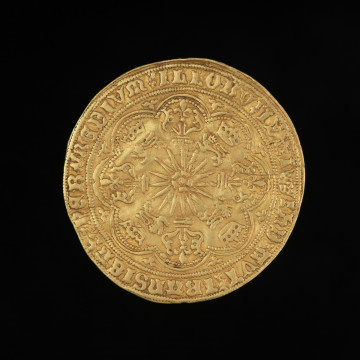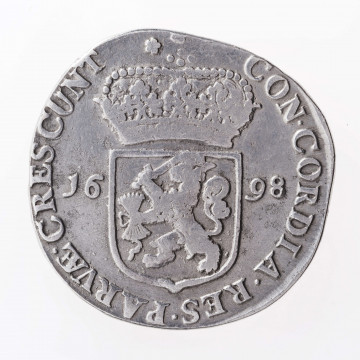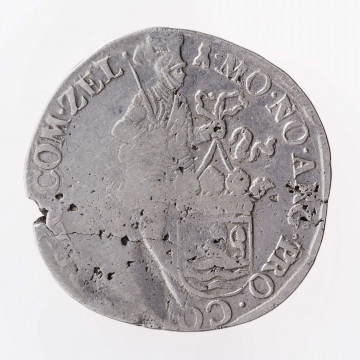
Nobel
1585 — 1587
National Museum in Szczecin
Part of the collection: German coins
In the 15th century, the German Reich was one of the most extensive and relatively economically well-developed areas of Europe. However, it was not a political monolith, and German kings from the 13th century onwards, among them Frederick III, Holy Roman Emperor (1415–1493), were embroiled in disputes with numerous secular and ecclesiastical princes. Frederick III’s activities focused primarily on building the power of Austria, but it was during his reign that Germany prospered economically. In order to trade internationally, merchants joined together to form partnerships using loans from bankers’ houses, which granted loans in gold guilders. The issuance of these coins was a response to the money market’s need for a means of payment to service long-distance trade and finance industrial development. There were also guilders with Frederick III’s name on them, such as the presented coin from the Dutch mint in Deventer. Through his marriages, Frederick III acquired further territories, including the Netherlands. As a sign of subordination to the Reich Emperor, his name was placed on coins minted by the local centres. The reverse of the guilder is unusual in that it bears the Latin inscription “Coin of Deventer” and the ending of the issue date 88 (1488), since guilders usually bore the legend “New Coin” or “Gold Coin”. The dating of coins is also rare, sporadically appearing in European minting since the end of the 15th century. Gold guilders played a very important role on the German money market for almost three centuries. They were used not only to finance economic activities, but also political ones. The guilders were used by local rulers to pay their mercenary armies, and by emperors to pay their dukes and electors to win their political support. Merchants and businessmen settled their mutual obligations in guilders, and the value of estates and legacies was determined in numbers of the coins. The loans granted to the emperors by Europe’s most famous Augsburg banking house, the Fuggers, were also expressed in guilders.
Mieszko Pawłowski
Other names
Goldgulden
Author / creator
Dimensions
cały obiekt: diameter: 22.8 mm
Object type
coin, money
Technique
minting
Material
gold
Creation time / dating
Creation / finding place
Owner
National Museum in Szczecin
Identification number
Location / status

1585 — 1587
National Museum in Szczecin

1698
National Museum in Lublin

1694
National Museum in Lublin
DISCOVER this TOPIC
Museum of King Jan III's Palace at Wilanów
DISCOVER this PATH
Educational path